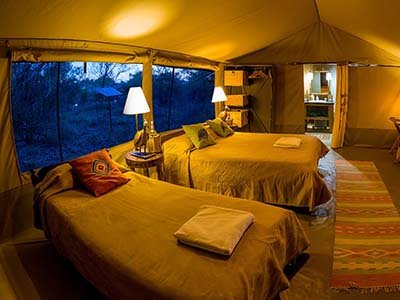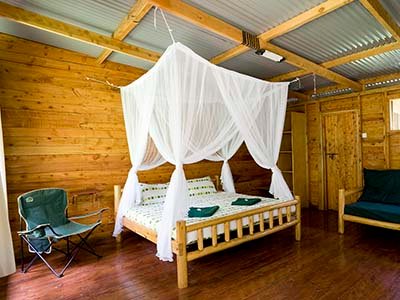Mkomazi National Park
Mkomazi National Park is one of Tanzania’s 22 national parks, and it’s also one of the newest. There are more than 12,000 elephants in the surrounding Tsavo Mkomazi ecosystem, which includes the park.
It was founded in 2008, after the government of the nation assumed control of the Mkomazi-Umba Game Reserve, which had recently seen its elephant, African wild dog, greater kudu, sable antelope, and brindled gnu/wildebeest populations decline due to issues including cattle encroachment and poaching. The black rhino was the most evocative casualty since it had been hunted to extinction. The establishement occurred following the establishment of a trust that performed a significant conservation role, the Tony Fitzjohn/George Adamson African Wildlife Preservation Trust (TFJGAWPT), which started in 1989. Since 1951, it had been a reserve at first.
It stretches 130 kilometers from northwest to southeast and has a total area of 3,276 square kilometers. Mountains may be found to the west, including the 1,594-meter Maji Kununua and the 762-meter Kinondo (1,620 m).
Mkomazi is a delightful stopover between the northern safari circuit and the east coast, and a natural gem that is shockingly under the radar. The enormous beauty really absorbs you. You’ll be able to see the snow-capped summit of Mount Kilimanjaro in the distance while sitting in the verdant valley between the Usambara and Pare Eastern Arc Mountains.
Mkomazi is located at the southern tip of the sahel zone and to the east borders Tsavo West National Park in Kenya. Together with Tsavo, it forms one of the largest and most important protected ecosystems on earth. The park is used as a grazing zone for mammals from the nearby dryer, despite its name, which comes from the Pare tribe’s phrase for “scoop of water.” It’s remarkable how well adapted all of the local plants and animals are to the dry conditions. Many towering baobab trees are a defining feature, and around half of the plant species there are unique to this area.
Wildlife in Mkomazi National Park
During the dry season, when the plains become too barren for large herds of grazers, the quantity of mammals is lower than in the more well-known parks, but the diversity is astounding.
Similar to neighbouring vast Tsavo national park, which shares a border with Mkomazi, migratory herds of elephants find this area to be a comfortable habitat. You’ll see them roaming the park among other migratory species, including zebra, hartebeest, giraffe, kongoni, Grant’s gazelle, eland, and buffalo. Mkomazi is the place to go to see some very spectacular and unique animals. The only place in Tanzania where oryx, lesser kudu, and gerenuk may be seen with a little patience. The black rhino and wild dog both find refuge in Mkomazi.
Mkomazi is home to several critically endangered species, including black rhinos and wild dogs.
Two conservation efforts have had encouraging results: the Mkomazi Rhino Sanctuary, which has resulted in successful breeding, and the African Wild Dog Capture and Translocation Programme, which has successfully returned a few dozen canines into the wild over the past decade.
Birds and Birding in Mkomazi National Park
Mkomazi National Park is a great destination for birding enthusiasts, as it is home to over 416 species of birds with 12 globally threatened species including the secretary bird, the massive Kori bastard.
The northern part of Tanzania is home to both common and unusual species. So, look out for the violet wood hoopoe, Shelley’s starling, Fischer’s Lovebird, the Somali long-billed crombec, and Friedmann’s lark. Large ground birds such as the ostrich, secretary bird, and kori bustard are common inhabitants, as is the cobalt-chested vulturine guineafowl.
Huge Verreaux’s eagles lurk in the sky, ready to pounce on an unwary hyrax at any moment.
Climate and Weather
Daytime highs of 28°C to 36°C (sometimes 40°C) and nighttime lows of 17°C to 18°C (occasionally 10°C) contribute to an annual average temperature range of 22 to 26°C.
There is a distinct dry season from around the middle of May to the end of October, and a distinct wet season from about the middle of November to the middle of May (with the least rain falling in January and February and the most falling in April). With regards to Tanzanian national parks, Mkomazi is the one that receives the least amount of precipitation.
Best time to Visit Mkomazi National Park
At any time of the year, a trip to the park would be enjoyable. However, for the best Mkomazi National Park Safari experience the best time to visit is from June to October, when the weather is dry and the park is at its most accessible. During this time, visitors can enjoy clear skies, comfortable temperatures, and excellent wildlife viewing opportunities.
How to get to Mkomazi National Park
The park may be reached by both car and plane.
It takes three hours to drive the 202 kilometres from Arusha town (195 kilometres on a good tarmac road; the last 7 kilometers on a rough road).
Private planes departing from Arusha are offered by a number of safari operators. The nearest major airports are located in Arusha, Moshi, and Kilimanjaro. From there, visitors can take a shuttle bus or hire a private car to reach the park.
Accommodation in Mkomazi National Park
There is one tent camp, as well as public and reserved campsites, within the park (booking for the latter is through TANAPA). The village of Same, located just outside the park, offers a variety of places to stay.
What to do in Mkomazi National Park
Activities on a safari include driving around to see animals, guided walks, taking pictures of birds, and observing wildlife.




